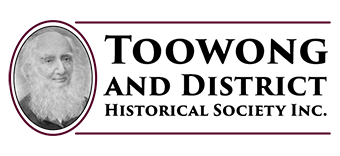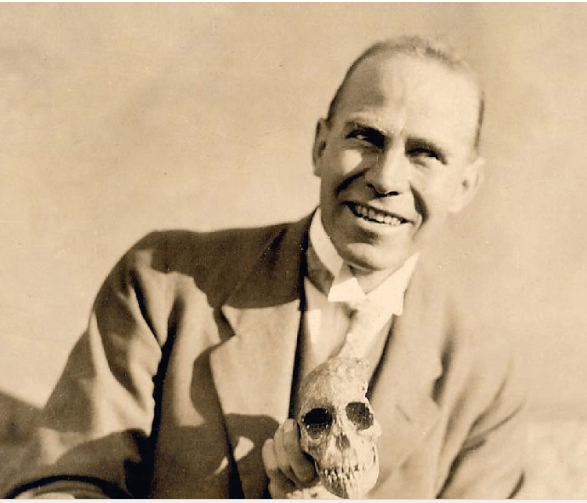This is the first part in a series about street names in the Toowong District. This list shows the original estate featuring the state, alternative names for the street and where possible ideas about the origin of the street name. Researched and compiled by Philippa Stanford with many references to books published by TDHS committee members Leigh Chamberlain and Lee Bull.

Ada St, Toowong – The New Guinea Estate –
Adsett St, Taringa – possible connection with Mr Adsett, a 70 year old man who left Lang Farm and became lost in the bush for two days. He was finally found, exhausted, on the beach at Sandgate.
Agnes St, Auchenflower – Named after the children of the former owner of Torwood, John Douglas – Annie, John, Agnes
Aldridge St, Auchenflower – Dunmore Estate (Cribb’s Paddock 1899) – Named after one of the original holders of a deed of grant in the area
Alpha St, Taringa – South Toowong, 1884 – Shown as Government Road on South Toowong Estate Map
Archer St, Toowong – Arley Estate Toowong – Shown on Arley Estate Map as New Road. Named after Alexander Archer (1828-1890), manager of the Bank of New South Wales in Brisbane and a member of the Queensland pioneering Archer family.
Annie St, Auchenflower – Torwood Estate – Named after the children of the former owner of Torwood, John Douglas – Annie, John, Agnes
Ascog Tce, Toowong – part of Ascog Estate
Aston St, Toowong – Eskmount Estate – Possibly named after George Peter Aston (1847- 1898) was a surveyor who worked briefly for Richard Gailey in 1877
Auchenflower Tce – Auchenflower Estate
Augustus St, Toowong – Moore’s Estate, 1889 – Named after the explorer and surveyor Sir Charles Augustus Gregory
Bangalla St – Rathdonnell Estate – Formerly Irving St c1911
Baroona Rd, Milton – Bayswater Estate – Shows as Government Road on Baywater Estate map
Bayliss St, Auchenflower – Formerly Isaac St. Was extended in 1938 past Croydon St and Bowling Lane. After the Sharp and Musgrave 1936 subdivision of the former Drysllwyn Estate the extended Isaac St was renamed Bayliss St
Bayswater St – Bayswater Estate
Beard St, Auchenflower – Formerly Mary St – Initially surveyed in 1911
Bennett St, Toowong – Curragh Bawn Estate, 1922 – Named after EJ Bennett, chief draughtsman in the Survey Office of Poplar House near current day Hale St.
Benson St, Toowong – Arley Estate Toowong – Previously known as Roberts Street as shown on Arley Estate map. The name was changed in 1940 probably after Dr John Robinson Benson (about 1836- 1885) a prominent medical officer with no connection to Toowong.
Bent St, Toowong – Ivy Estate, Toowong, 1884 –
Birdwood Terrace, Auchenflower – Chermside Park, Auchenflower, 1921 Birdwood Park Estate, Upper Auchenflower 1926 Birdwood Park – Upper Auchenflower Estate – Was originally part of Heussler Terrace – Named after William Riddell Birdwood, General Birdwood
Boomerang St, Milton – named after the paddlesteamer SS Boomerang
Bowling Lane, Auchenflower/Toowong – Named in 1920 at the time of the foundation of the Auchenflower Bowling Club. Was the path from Drsllwyn to the bowling green
Brisbane St, Toowong/St. Lucia – named as the road to town c. 1877
Burns Rd, Toowong – Eskmount Estate, Toowong, 1936 – Previously the Indooroopilly Pocket Rd or Pocket Rd – possibly named after James Burns who purchased land in Lang Farm estate
Burt St, Auchenflower – Sharp and Musgrave subdivision 1936 – Named after the Burt family who lived at the junction of McIlwraith st and Burt St – This street was the only rear entrance for grand houses with frontage on Milton Rd including the Groom residence
Bywong St, Toowong – Used to be known as Grosvenor St which may have been named for Hugh Lupus Grosvenor, KG, PC, JP (1825-1899) , the first Duke of Westminster. Changed in the 1950s. Bywong means Big Hill
Cadell St, Auchenflower/Toowong – Earlier John St until 1938. Initially only from Croydon St to Bowling Lane
Camford St, Milton – Named after the Camford Milk Company then Factory between Camford St and the Railway line from 1949
Camp St, Toowong – An old time resident claimed that Camp Street was used in earlier times as a camp by drovers taking cattle across the district
Carr St, St. Lucia – possibly named after a member of the Carr family
Challinor St, Auchenflower – Dunmore Estate (Cribb’s Paddock 1899 – Named after Dr Henry Challinor 1814-1882 a leader in medicine, civic affairs, the church and politics.
Chaseley St, Auchenflower – Dunmore Estate (Cribb’s Paddock 1899) – The Chaseley was one of three immigrant ships of Reverend Dunmore Lang’s emigration program of 1849
Clarence Rd, Taringa – Named after Ralph Fry Clarence who lived at Holmlee and Clarencewood
Coronation Drive – Fairholme Estate, Milton, 1913 & Arley Estate Toowong – Formerly Moggill Road, then River Road. It was renamed Coronation Drive in 1937 to commemorate the coronation of King George VI
Cribb St – Fairholme Estate, Milton, 1913 -named after JG Cribb who lived at Fairholme House which was high on the hill overlooking Brisbane River above the entrance via Little Cribb
Cue St, Auchenflower – 1899 Maclean subdivision of the Dunmore Estate formerly Cribb’s Paddock – Originally Railway Lane






















